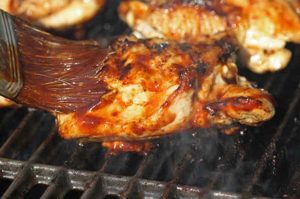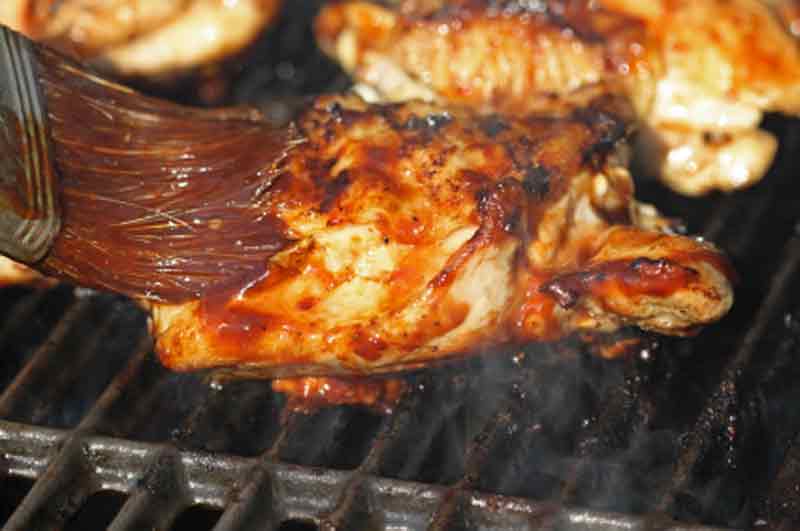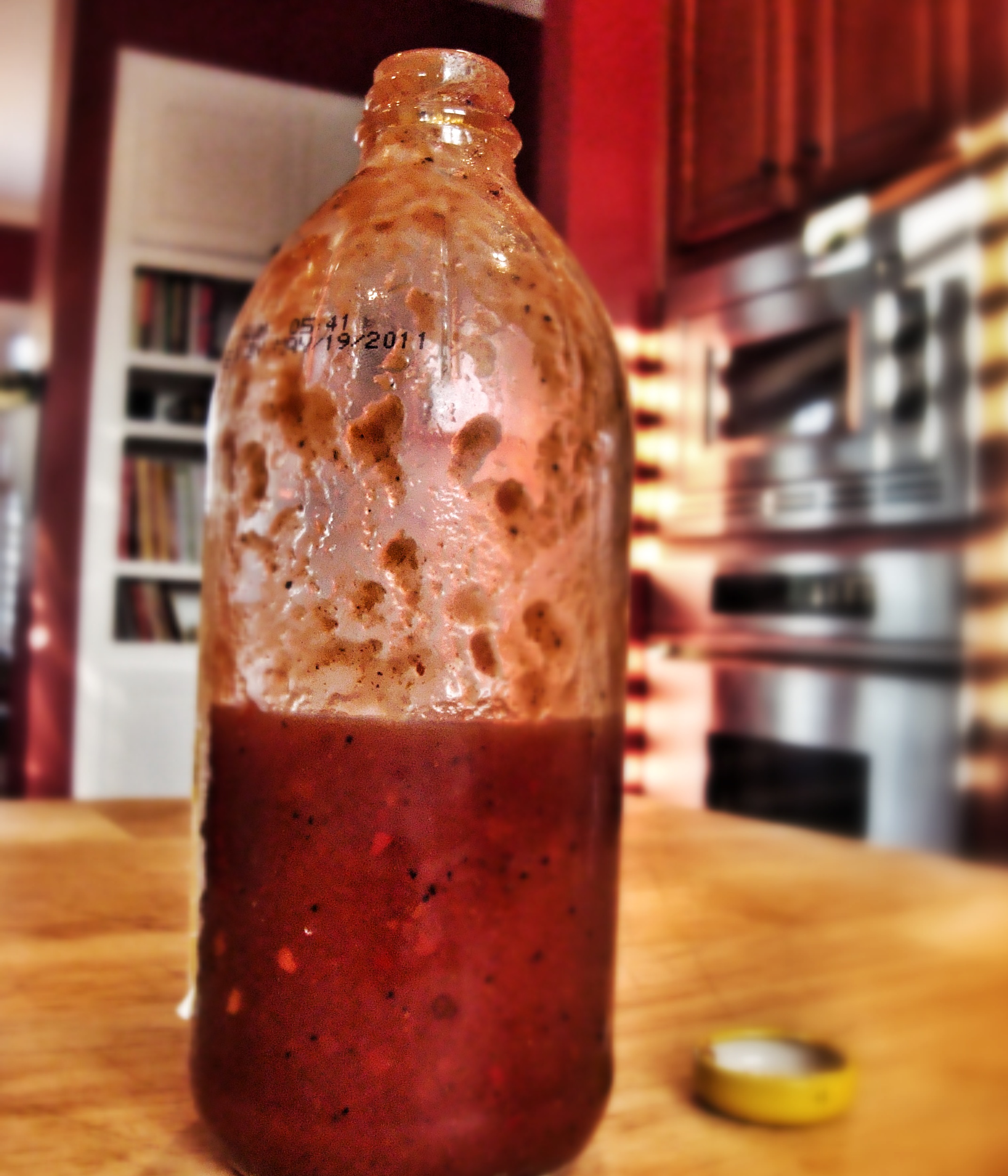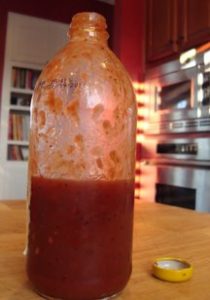By Joe Johnson
In all honesty, I love ribs, but I hate the ribs that the vast majority of establishments serve. Rarely do I get ribs that are done properly as most tend to be either dry and leathery, or soft and mushy. Worst part is, most of these establishments believe that slathering the ribs in a barbecue sauce will bring them back to edible status. Well they are wrong…all it serves to do is add to my frustration by making the meal messy.
While very few, if any, chefs, pit masters, or home-cooks strive to achieve a leathery finish, you do hear the statement that “falling off the bone” is the way to go. While I agree that tender and soft is the ultimate goal, any competition rib that completely falls off the bone is considered completely over-done. A truly perfect rib will adhere to the bone, but fall off when tugged. So my goal with this post is to show you how to achieve a perfect rib at home. The key to good ribs has four components – the rub, the smoke, the heat, and the time. Let’s begin with the rub.
The point of using a rub is to develop a flavor base and to create a crust or bark on the ribs. Depending on where you go and whom you talk to, the rubs you have to choose from will reflect regional influences. Some will be hot and spicy, whereas others will be sweeter. I am partial to the Pork and Poultry Blend from Caroline’s Rub, which has a more typical Texas flavor – more savory than sweet. I like sweet, don’t get me wrong, but I prefer my ribs with more kick than candy, so I let my wood choice add the sweetness. Before applying the rub, the first thing I do is remove the thin skin that covers the back side of the ribs. Using a filet knife, I loosen it from one end, grip it with a paper towel, and then pull it off in one easy motion. While you don’t absolutely have to remove this skin, taking a few extra seconds to do so will definitely improve the tenderness of your final outcome. I then rinse and thoroughly dry the ribs, and follow that with a thorough coating of my chosen dry rub. How much you use, will entirely depend upon you. I like a thicker coating, some will prefer less. Next take the coated ribs, and tightly wrap them in plastic wrap, place in the refrigerator and let sit for at least 3 hours. This will give the rub time to penetrate and flavor the ribs. Once the ribs have sat, remove from the refrigerator and allow them to return to room temperature before putting on the smoker.
While the rub adds an immediate kick of flavor, the smoke you choose will work to complement the rub, and add that flavor we all recognize as barbecue. With meats such as pork ribs, I like to kiss the meat with smoke from pecan and cherry woods. The pecan is very similar to hickory in flavor, without the strong bite that can sometimes overpower the lighter meat of the ribs. The addition of cherry wood to the mix serves to work with the pecan to sweeten the meat.
Next factor for success is heat. While there are a thousand ways to cook ribs, many of which yield a truly great product, I prefer slow smoked ribs. Nothing gets my blood pumping like the smell of slow smoked barbecue. I have always found that higher temperatures result in tougher ribs, so my goal is to maintain a low heat level of around 215F to 225F in the smoker (or in your oven at home). This temperature range has yet to fail me. Once I have the smoker where it consistently holds the temperature within this range, I will place the ribs standing in a rib rack, inside for cooking.
Finally, the last factor for creating successful ribs is the cooking time. While many folks insert a thermometer in their ribs to determine doneness, I prefer simply watching the bones. For an average rack of baby back ribs, you can assume a cooking time of between 3 ½ and 4 hours at the temperatures I recommend. The easiest way for me to determine if my ribs are done is to perform two steps, starting with the first at the 3 hour mark – look at the bones. If I have a good ¼ – ½ inch of bone showing, I then perform step two, which is to take a toothpick and insert into the meat. If it slides through will little resistance, like going through butter, the ribs are done. You will want to watch them closely as they will go from done to overdone fairly quick.
Once cooked, I like to let the ribs rest for at least 10 minutes to allow the juiced to evenly distribute themselves within the meat, which will keep things tender and moist. Like I said earlier, I don’t like messy, so I tend to serve the ribs dry, with a side of my favorite barbecue sauce for dipping.
Following this method has consistently provided me with ribs that are succulent, moist, and truly satisfying.
Joe Johnson is a proud Texan and founding partner and chief pit-master with Caroline’s Rub, where he is in charge of product promotion and development for their line of gourmet dry rubs, smoked salt, and Texas chili seasoning.
Article Source: http://EzineArticles.com/?expert=Joe_Johnson
http://EzineArticles.com/?Creating-Perfect-Ribs-in-Your-Smoker&id=193036
 Barbecue’s big flavors often call for a collection of robust sides. Often times a backyard cookout is accompanied by some cheap potato chips. Here’s a way to dress it up and offer a slightly healthier (baked) alternative. Sure you can buy pita chips in the store, but they tend to be small overpriced bags and not enough for small gathering.
Barbecue’s big flavors often call for a collection of robust sides. Often times a backyard cookout is accompanied by some cheap potato chips. Here’s a way to dress it up and offer a slightly healthier (baked) alternative. Sure you can buy pita chips in the store, but they tend to be small overpriced bags and not enough for small gathering.










